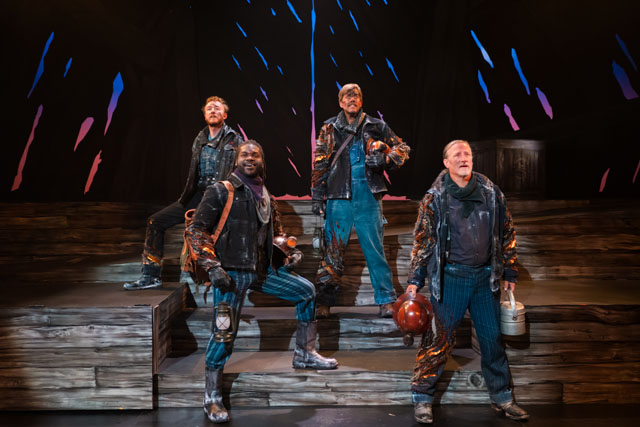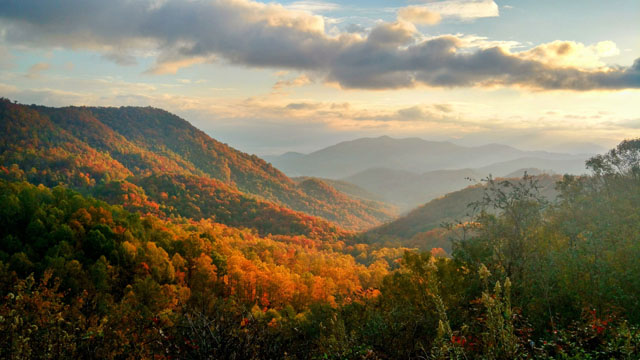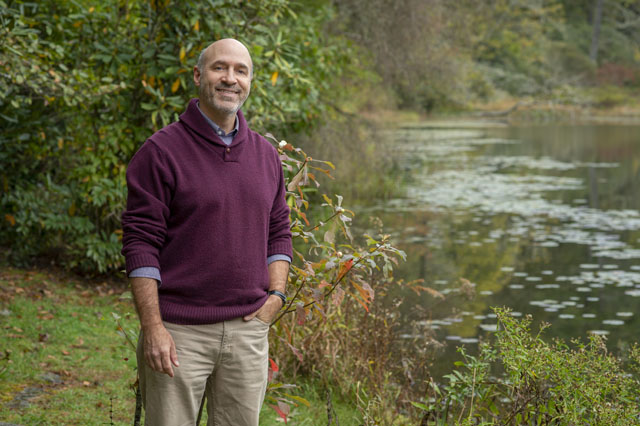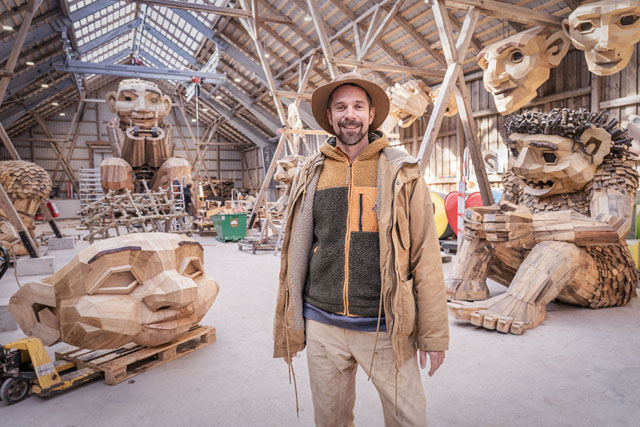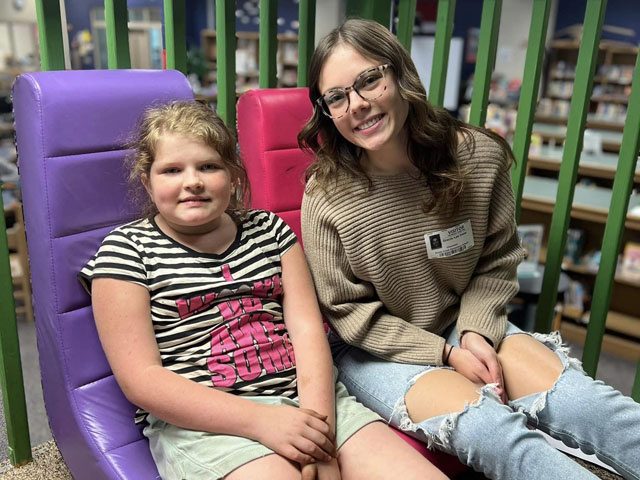To the Mountains with Mary Alice Monroe
01 Oct 2025
Finding solace and strength in nature
October-November 2025
Written By: By Pamela Jouan | Images: Photo Patrick Brickman
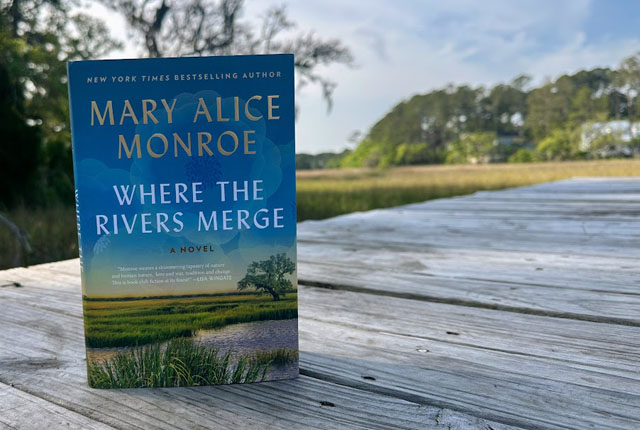
Monroe is best known for her environmental novels set in the Low-country, where sea turtles, bottlenose dolphins, and shorebirds often take center stage. But her latest novel, Where the Rivers Merge (the first part of a duology), marks a departure—an evolution, really. Though still deeply rooted in nature, this book turns its gaze away from individual species and looks toward the land itself through the lens of one family’s saga over land conservation and inheritance rights
If there’s one lesson nature keeps repeating, it’s that no place is truly immune. Hurricanes batter the coast. Wildfires ravage the West. Floods surge through once-dry creeks. For New York Times bestselling author and conservationist Mary Alice Monroe, the search for shelter—both physical and emotional—led her to the North Carolina mountains. But she didn’t just find a place to escape a storm; she found her tree hollow.
Monroe’s own path to Tryon, North Carolina, wasn’t a straight line—it was a stormy one. Literally.
“I love living on the Isle of Palms in South Carolina,” she insists. But as climate change intensified and hurricanes grew more powerful and unpredictable, Monroe felt the pull of the mountains. “When you live on a barrier island, having an evacuation plan is paramount,” she says. “I wanted a safe place to go when storms came.”
She had visited friends in Asheville over the years, searching for the right spot in the highlands. “Nothing ever really spoke to me,” she admits. That changed about 12 years ago when she was invited to speak about wildlife in nature in Tryon. There, she met a woman building an equestrian center who later offered Monroe a safe haven—literally over her horse barn—during 2017’s Hurricane Irma.
“I arrived with two Cavalier spaniels, a cat, and six canaries,” Monroe laughs. “And I ended up sleeping in this beautiful apartment over the barn. I opened these huge wooden shutters, turned off the news, and just let myself be still. I fell asleep listening to the night lullabies of the horses.”
The storm, the silence, and the sense of connection she felt in those mountain nights marked a turning point. “As she helped care for the animals and bonded with the other women who had taken refuge there, that experience inspired her 2019 novel The Summer Guests, a story grounded in equestrian culture and the strength of community that forms during a crisis. “It was the affection I felt for the people here that made me realize—this is my home,” she says.
Shortly after the storm, Monroe found a historic house nearby and fell instantly in love. “It was built around the same time as the Biltmore estate by some of the same craftsmen,” she says. “A vintage five-bedroom home, full of character—and yes, it’s haunted,” she adds with a knowing smile.
Ironically, the very reason she came—to escape climate-induced destruction—caught up with her anyway. 2024’s Hurricane Helene inflicted significant damage on the town in terms of flooding and downed trees. Luckily, her own home escaped pretty much unscathed.
For Monroe, the mountains offer more than just safety—they provide sanctuary. “Whether I’m at the beach or in the mountains, the sensation is the same. I call it the power of infinity,” she says. “When you stand before something so vast, like the ocean or a sweeping mountain vista, your problems feel infinitesimal. And yet you feel more connected to the world because you’re part of something bigger.”
It’s a sensation she encourages readers to harness in their own lives. “Find a vista that makes you feel that connection,” she advises. “Keep that with you when you go home. It gives you equilibrium for when you’re facing bills or arguments with the children.”
That philosophy permeates Where the Rivers Merge, an historical novel about generational struggles, conservation, belonging, and spiritual connection. The book is set in South Carolina’s ACE Basin—the confluence of the Ashepoo, Combahee, and Edisto Rivers—one of the largest undeveloped estuaries on the East Coast. While her earlier works focused on individual species, this novel zooms out to consider the land itself.
“I finished 20 years of writing about specific animals,” Monroe explains. “Now I want to write with a bigger scope. It felt more important to talk about habitat and natural resources as a whole, so people understand what’s at stake—not just species by species, but as a planet.”
The book’s protagonist, Eliza, a steely matriarch deeply rooted in her family’s land, slowly begins to understand her role in a larger ecological story. Throughout the story, a tree hollow comes to represent a place of refuge where Eliza can go to reflect and connect with the natural world. “We all need to start thinking of ourselves as good stewards of the land and start seeing ourselves as part of it,” Monroe says.
It’s no surprise then that she encourages others not to join a cause for the sake of it, but to start where they are. You don’t have to be part of a conservation group. “If you live on a farm in the Midwest or have a postage-stamp backyard, I want every reader to feel connected to their own piece of land so that they know how to protect it. Just look around you. Take care of what’s yours.” That’s where change begins.
This way of thinking isn’t new for Monroe—it’s simply deepened over time. “Even as a kid, I’d water the skinniest neighborhood trees and sing to them,” she says. “I’d gather dandelion bouquets and bring the outside in.”
That childlike joy later blossomed during visits to her late husband’s family farm in Vermont. “That’s where I really learned about trees and birds and wildlife, exploring along with my young children. It was so much fun—and that joy became the foundation for many of my books.” In fact, it’s not a stretch to extrapolate Monroe’s zest for life reflected in the book’s young version of Eliza.
Monroe writes in both the mountains and by the water. In fact, she recently finished part two of Where the Rivers Merge during a recent stay in Tryon. It is also where she has connected with a growing circle of kindred spirits—including friend and fellow author Delia Owens, who wrote Where the Crawdads Sing. “Delia and I became close after she moved here. We’re both passionate about bringing back the Southern writers’ community that once flourished here.”
In a world marked by natural disasters, Monroe’s work is a reminder that solace—and strength—can be found in nature. And whether she’s in the Lowcountry or in the mountains of North Carolina, she’s found both.
BIO
Mary Alice Monroe
Author
» Hometown: Evanston, Illinois
» Education: Bachelor's degree in Asian Studies and Japanese and master's degree in education from Seton Hall University. She also studied at Northwestern University and the Ted Liss Studio for Performing Arts.
» Hobbies: Mary Alice is an avid naturalist and conservationist.
» Family: Mary Alice is blessed with a husband, children and grandchildren. A fun fact is that her daughter Greta painted the famed turtle mural on Isle of Palms.

